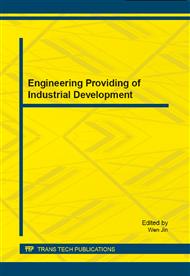p.253
p.258
p.263
p.267
p.273
p.279
p.283
p.291
p.295
Multi-Plate Shift Clutch Morbidity Index Forecasting Method Study
Abstract:
According to the configuration characteristic of high-power transmissions and working principle of multi-plate shift clutch, the clutch dragging process is analyzed at first in this paper. After introducing the usual monitoring method of clutch dragging process, a portable vibration monitoring method is proposed. And then a GMDH forecast method on the basis of the morbidity index is presented. The practical application of the method can reduce the probability of clutch invalidation, and significantly extend the clutch’s working life.
Info:
Periodical:
Pages:
273-278
Citation:
Online since:
September 2014
Price:
Сopyright:
© 2014 Trans Tech Publications Ltd. All Rights Reserved
Share:
Citation:


